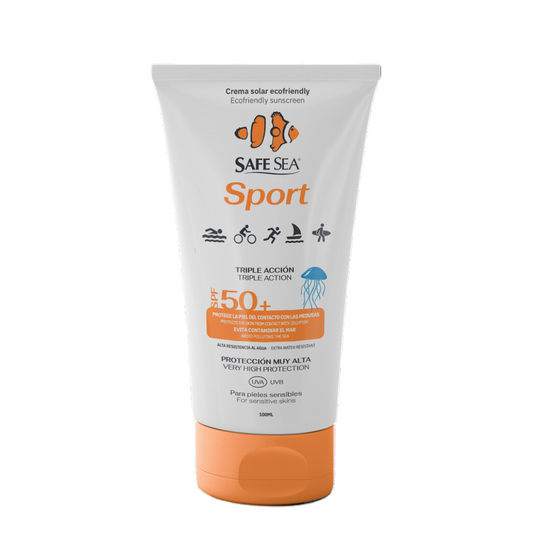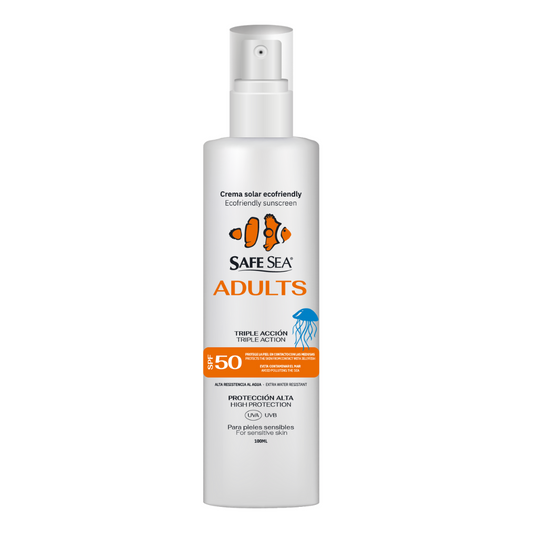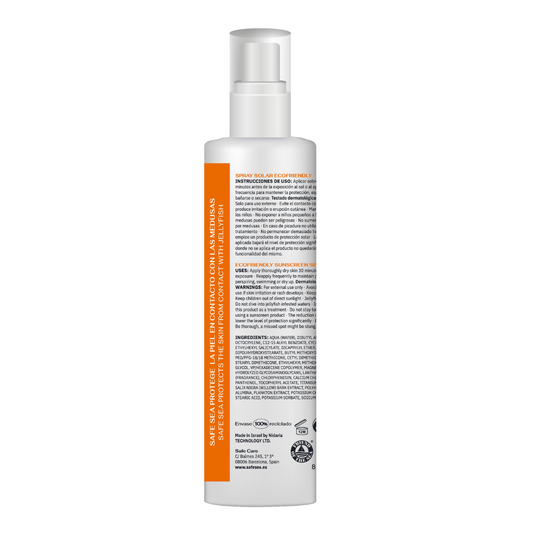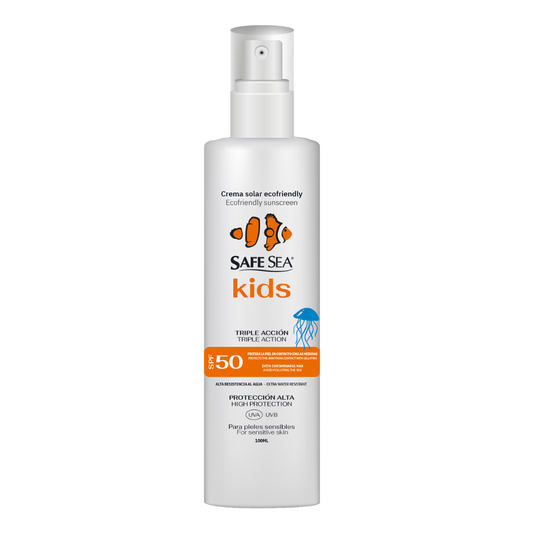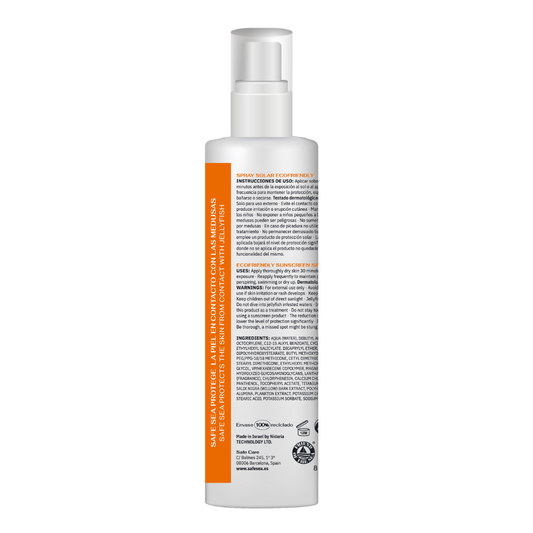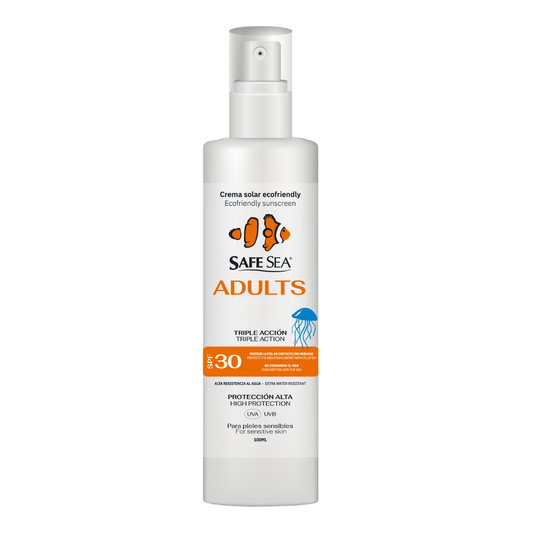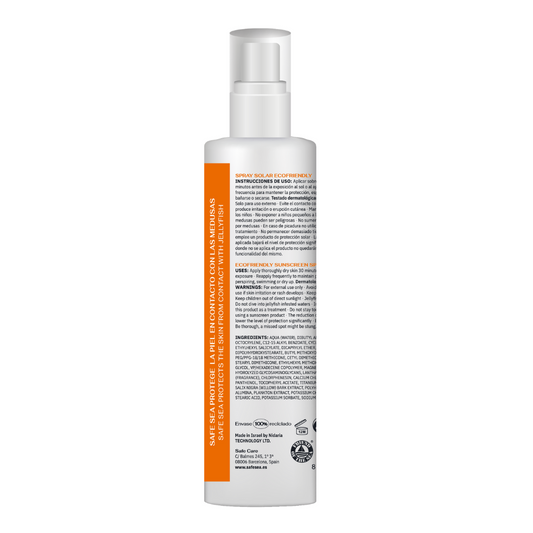When it comes to sunscreen, the difference between water-resistant and extra water-resistant formulas is how long they protect your skin when it gets wet. This doesn't just mean when you're swimming, but also with splashing, sweating, etc. Here's the main difference between a water-resistant and extra-resistant sunscreen.
How long does a water-resistant sunscreen last?
Water-resistant sunscreen generally maintains 50% of its SPF after 40 minutes of swimming. SAFE SEA products are extra water-resistant, which means they maintain at least 50% of their SPF after 80 minutes of swimming. In the case of SAFE SEA sunscreens, they maintain up to 95% of their SPF after 80 minutes.

Does sunlight reach the skin under water?
If you like to swim outdoors, you've probably already wondered if you can get burned underwater.
Many people think that if you are in the water you are completely protected from the sun; but, in reality, UV rays penetrate the water. For example, if you are diving one meter underwater, 50% of the UVB rays and 75% of the UVA rays still reach the skin.
Because you can still get burned when swimming, it's always a good idea to apply an extra water-resistant sunscreen. Each SAFE SEA product offers water-resistant sun protection. For those kids who love the water, SAFE SEA KIDS SPF50. Don't forget to reapply regularly, especially after towel drying.
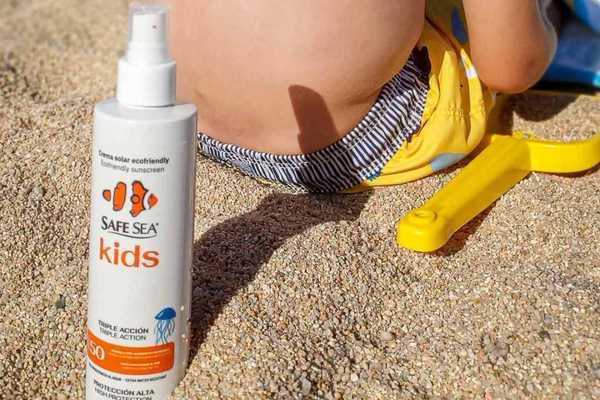
SAFE SEA protectors are specially formulated for swimming.
SAFE SEA sunscreens are water resistant for up to two hours and provide immediate protection from the sun. Whether you're cruising along the coast or breaking a sweat with water sports, there's a water-resistant SPF sunscreen for you.
Did you know that water increases the intensity of UV rays by reflecting? You should be careful when sailing: people falsely assume that the intensity of UV light is not as high because of the wind. Protect yourself and apply a higher SPF. To keep your skin protected, be sure to reapply at regular intervals.


